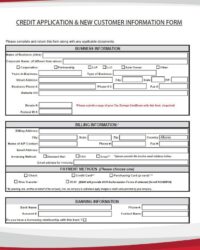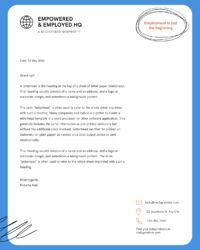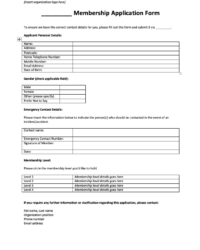Utilizing a pre-designed structure offers several advantages. It streamlines administrative tasks, reduces data entry errors, and ensures consistency in information gathering. This standardized approach allows organizations to easily track membership growth, segment members based on demographics or interests, and personalize communications. Furthermore, it provides a professional first impression and reinforces the organization’s credibility.
This discussion will further explore key components of effective design, including essential data fields, legal considerations, and accessibility best practices. Subsequent sections will delve into strategies for integrating these forms into broader membership management systems and optimizing them for online platforms.
Key Components of a Nonprofit Membership Application
Effective applications are built upon a foundation of essential elements that ensure clarity, efficiency, and legal compliance. These components work together to collect necessary information, manage member data effectively, and create a positive experience for prospective members.
1. Contact Information: Full name, address, phone number, and email address are fundamental for communication and record-keeping.
2. Membership Levels: Clearly defined tiers with associated benefits and fees enable applicants to choose the option that best suits their needs and budget.
3. Payment Options: Providing various payment methods (e.g., online payment, check, bank transfer) enhances convenience and accessibility.
4. Data Privacy Statement: A concise statement outlining how personal information will be collected, used, and protected is essential for transparency and compliance with data protection regulations.
5. Communication Preferences: Allowing applicants to specify their preferred communication channels (e.g., email, postal mail) facilitates personalized engagement.
6. Demographic Information (Optional): Collecting optional demographic data can assist organizations in understanding their membership base and tailoring programs accordingly. However, it’s important to clearly state that providing this information is voluntary.
7. Signature and Date: Including space for a signature and date formalizes the application and signifies agreement to the organization’s terms and conditions.
A well-designed application form facilitates streamlined processing, accurate record-keeping, and a positive onboarding experience, laying the groundwork for a strong and engaged membership base. Careful consideration of these components is vital for maximizing the effectiveness of membership recruitment efforts and building a thriving community.
How to Create a Nonprofit Membership Application Template
Creating a well-structured application form is essential for efficiently managing new member onboarding and maintaining accurate records. The following steps outline the process of developing an effective and user-friendly template.
1. Define Objectives: Clearly outline the purpose of the application and the specific information required from prospective members. Consider the organization’s needs and the different membership levels offered.
2. Choose a Format: Select an appropriate format (e.g., online form, printable document) based on the organization’s resources and target audience. Online forms offer greater accessibility and automated data collection.
3. Structure the Form: Organize the form logically, grouping related fields together. Ensure clear labeling and concise instructions for each section.
4. Incorporate Essential Fields: Include essential fields for contact information, membership type selection, payment details, and communication preferences. Consider optional fields for demographic information, while respecting privacy considerations.
5. Ensure Legal Compliance: Include a clear data privacy statement outlining how personal information will be collected, used, and protected. Adhere to relevant data protection regulations.
6. Test and Refine: Thoroughly test the application form to ensure functionality, clarity, and ease of use. Gather feedback from staff and potential members to identify areas for improvement.
7. Implement and Promote: Integrate the finalized application form into the organization’s website and other relevant platforms. Promote its availability to potential members through various communication channels.
A thoughtfully designed application facilitates streamlined processing, ensures data integrity, and enhances the overall membership experience. By following these steps, organizations can create a valuable tool for managing their membership base effectively.
Effective management of member data is crucial for the success of any nonprofit organization. Standardized forms provide a structured approach to collecting necessary information, streamlining administrative processes, and ensuring data accuracy. From contact details and membership preferences to payment information and communication opt-ins, a well-designed structure facilitates efficient tracking and personalized engagement. Legal compliance, data privacy, and user experience are paramount considerations throughout the development and implementation processes.
Ultimately, a thoughtfully crafted structure serves as a foundational element for building a strong and engaged membership base. It empowers organizations to cultivate lasting relationships with their supporters, optimize communication strategies, and further their mission effectively. Investing time and resources in developing robust systems for membership management contributes significantly to long-term organizational sustainability and impact.


